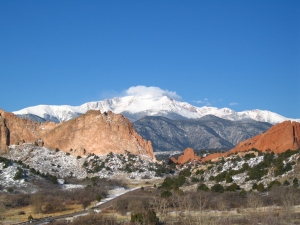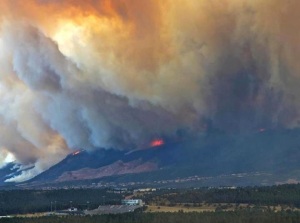Ken Ivory, a Utah state lawmaker and president of the lands council, came under scrutiny last week after a left-leaning nonprofit accused him of “an illegal scheme to defraud local government officials out of taxpayer funds.”
The lands council advocates for transferring federal land to state and local control and is primarily funded by the membership dues of county and municipal governments.
A Washington D.C.-based nonprofit advocacy group, Campaign for Accountability, filed complaints with western state attorneys general, including in Arizona. The complaint alleges that Ivory used the American Lands Council to enrich himself and his wife, who receive the majority of the council’s funding.
The group raised more than $200,000 in 2013 from its membership dues and contributions, according to tax filings. Ivory was paid $95,000 and his wife was paid nearly $20,000 by the lands council that year. Ivory is the group’s president and chief spokesperson while his wife is a communications director.
Mohave County supervisors said they knew of the complaint but weren’t worried about its substance.
Supervisor Hildy Angius said she wasn’t concerned by any of the allegations against Ivory. In fact, Angius was in Washington on Monday meeting with members of Arizona’s congressional delegation about the transfer of public lands and brought Ivory along with her.
“We are proud to be a part of the American Lands Council, now more than ever,” Angius said.
Moreover, Angius said she took offense to the portrayal of elected county officials in the complaint, which refers to “unsuspecting Arizona officials.” The county knew what they were paying for, she said, and feels strongly about the importance of moving federal land toward local control.
“They must be very scared of (Ivory) and his message of freedom for the people of the West and their fight against the tyranny of federal government to be going after him in such a petty manner,” Angius said.
Ivory defended himself and went on the offensive against the group that filed the complaints during a webcast interview with the Salt Lake City Tribune last week. He said the complaints were a “political stunt” and questioned where the group’s own funding comes from.
He said as the lands council grew larger the share of its budget that his salary represented would shrink.
“I’ve been hired to do a job,” Ivory said. “I understand that in America we still appreciate that ethic of ‘a day’s pay for a day’s work.’”
Supervisor Buster Johnson said while he “wasn’t overly enthusiastic” about the county joining the council in the first place, he voted in favor of it as a sign of support to his fellow supervisors and county commissioners in Utah as well.
“I don’t see it as a major expenditure and obviously we will keep an eye on it to see how it works,” Johnson said. “I have faith in my Utah counterparts, and I’ve heard no complaints about how (the lands council) is run.”
For more about Ken Ivory and the American Lands Council visit americanlandscouncil.org
For more about the groups that oppose the Public Lands Transfer movement visit greendecoys.com














 Congress should pass legislation streamlining logging and restoration projects on national forests to create rural jobs and reduce wildfire risks, logging officials told the Senate Energy and Natural Resources Committee yesterday.
Congress should pass legislation streamlining logging and restoration projects on national forests to create rural jobs and reduce wildfire risks, logging officials told the Senate Energy and Natural Resources Committee yesterday.
 He recommended that Congress establish timber trusts in areas suitable for logging and that it clarify that “timber management is the primary objective on this relatively small portion of the National Forest System, not one use among many.”
He recommended that Congress establish timber trusts in areas suitable for logging and that it clarify that “timber management is the primary objective on this relatively small portion of the National Forest System, not one use among many.”